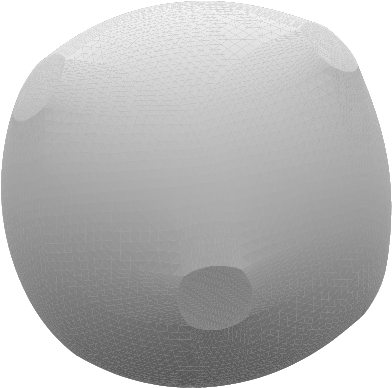Suppose a manufacturer bottles small units of liquid and ships them via very large trucks.
If the transportation cost nothing, spherical bottles would minimize the packaging cost (isoperimetric inequality); if packaging cost nothing, cubic bottles (say) would minimize the transportation cost, because they would pack on the trucks with no wasted space.
How would the ideal container vary with the relative cost of packaging (measured as the surface area of one bottle) and transportation (measured by the packing density on an infinitely capacious truck)?
[My "applied" formulation notwithstanding, I mean this as a pure mathematics question, so please idealize and ignore any distracting side issues.]
A reasonable conjecture might seem that one gets the correct family of shapes by starting with a tight lattice packing of spheres and then over-inflating and rescaling the spheres until asymptotically they assume the form of Voronoi cells of a lattice packing. So one would get constant mean curvature surfaces up to the circular disks at the interfaces between adjacent spheres. Optimal or not, this would give lower bounds. But how to compute them?

